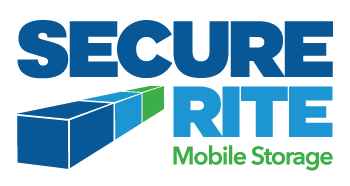
More Than A Feeling: E.Q. Is The New I.Q. In Today’s Virtual Work World
Emotional Intelligence: Emotional intelligence (or ‘EQ’) reflects our ability to “get” others and to respond appropriately. While IQ indicates one’s intellect, EQ measures one’s ability to handle emotions (self-regulation and understanding others) effectively. This ability is critical in the workplace as we constantly interact with one another – whether that be in person, over e-mail, phone, or Zoom. Despite the changing workforce we are seeing thanks to a pandemic, EQ is boundless and more relevant in the workplace than ever before because of the fact that the way we used to work and interact have completely shifted.
The ability to monitor one’s own and others’ feelings and emotions, understanding how certain variables or situations might impact these emotions, and using this information as a guide for effective regulation and leadership.
Navigating a global pandemic and the constant change that accompanies it has brought a new meaning to the word “normal”, and particularly when social cues and interpersonal communication have completely shifted as the world has leaned heavily into a digital workforce. The pandemic has sharpened our focus on what we understand to be “good leadership” and has reinforced the importance of emotional intelligence as a critical skill as the world changes the way it conducts business.
Emotional intelligence is necessary for:
- Crisis management
- Change management
- Nurturing a culture of trust and inclusivity
- Reducing occupational stress
- Increasing team effectiveness and fluidity
- Maintaining organizational commitment
- Effective leadership

Moreover, it is critical for employers and leaders to shift their beliefs around showing emotion in the workplace. By sharing vulnerabilities, challenges, and fears within established boundaries, leaders can show employees that it is safe to feel and discuss emotions at work.
Why Is EQ Important For The Workplace?

From an employee perspective, working for a company where communication flows and respect is high feels great. A high level of emotional intelligence in the workplace looks like people who are connected, who genuinely care about one another and want to help each other every day, and focusing on issues and process rather than placing blame. Employees spend a great deal of time with workmates and will stay longer when they’re happy.
From a leadership perspective, emotional intelligence increases efficiency and effectiveness. Efficiency is gained when people are aligned and moving in the same direction. Managers that have a high sense of emotional intelligence are able to address issues as they arise, knowing who to go to and how to most effectively communicate towards a resolution. By understanding human behavior and the impact of emotions in the workplace, we all work better together.
From a customer perspective, working with a company that cares about people and is able to work through issues means that you are likely to be treated well, fairly, and met where you are appropriately - whether that be in the midst of your most stressful day, or when you are in a rush. Emotionally intelligent people respond and interact appropriately; this “small thing” often makes that imperceptible difference leaving a customer feeling satisfied.
Managing five locations in Western Canada, Secure-Rite has remained flexible and agile in the wake of the pandemic and the ever-changing sense of “normal” in business due to an emphasis on values and harnessing the resilience and emotional intelligence of its people. With regularly scheduled digital check-ins for staff across the five locations, the Secure-Rite team remains connected and aligned with one another. Management also revisits meeting cadence and structure as feedback is shared in order to continually enhance and improve its team connections.
Understanding some of these critical changes in social interaction and corporate etiquette could help you and your team adapt to the new digital world of work, while still knowing how to take emotional care of one another.
Good-Bye Traditional Social Cues, Hello Digital Communication

The reality is that our teams are made up of different generations, which means that not everyone is operating from the same digital interpersonal communication lexicon.
With less people physically coming into the office and congregating around water coolers, it can be difficult to look for the social cues that we often innately notice during real-life interactions (such as tone, body language, etc.). However, there are ways to hone your emotional intelligence skill set to a digital work environment.
- If people are shy about speaking up and sharing ideas or issues over team Zoom calls, consider creating a vehicle by which employees can anonymously submit questions or ideas, like an Ask Me Anything Program set up on SurveyMonkey or Google Forms.
- While ALL CAPS might indicate urgency to one person, it might be conveyed as anger to another. Additionally, having some consideration for remote workers and how quiet their days can be at a distance can also be a factor in determining when to move from an e-mail or IM chat to a phone or Zoom video call. Tone and intent can be lost in translation with mere words over a screen, or if one particular communications vehicle is used over another during a disconnect.
- It is important to maintain a connection with the team no matter the distance. A great way to ensure that remote teammates don’t feel left out is structuring meetings in a way that everyone shares a personal or professional win at the beginning of each team call.
- Recreating virtual ‘water cooler moments’, or simple candid moments in virtual settings can be as simple as scheduling even fifteen minutes for a one-on-one catch-up – this was already happening at the office at the beginning of the day or over lunch anyhow and added to a feeling of being part of a community. Many teams are also embracing happy hours via Zoom, virtual lunch breaks, and more.
Workplace Communications And Notifications – Setting The Expectation Around Response Times

Many businesses use communications software like Slack, Microsoft Teams, or Wildix in a way that’s very synchronous. When messaging colleagues over a private chat, it is expected that a quick response will be yielded, which can quickly become an expectation and a burden for concentration.
It is important for teams to govern how people use workplace communications and what’s expected of them and their response times. For example, linking up a work calendar with a ‘Do Not Disturb’ chat setting is a great way to let colleagues know that an immediate response might not be possible if someone is busy in a meeting. Additionally, communications that come through direct messages can sometimes make people feel compelled to respond more quickly than, say, a post in a broader chat channel or all staff e-mail.
To make sure this doesn’t feel just as pressing as a tap on the shoulder, companies need to lay out clear and consistent guidelines and expectations for employees as to when a response is or isn’t immediately necessary, and which communications vehicles should be used in either setting.
The Right Amount Of Face Time

In a normal meeting, people will be looking at the speaker, taking notes or looking elsewhere. But on Zoom calls, everyone is looking at everyone all the time. A listener is treated nonverbally like a speaker, so even if you don’t speak once in a meeting, you are still looking at faces staring at you. Depending on the monitor size, faces over videoconferencing calls can appear too large for comfort. The increase in eye contact and the shift to sharing a more intimate and personal space over video with strangers or colleagues is an intense experience for some, so it’s important to understand when this level of facetime is appropriate.
Let’s imagine that a company is having a “Town Hall” meeting, and it is expected that one or two people are going to be doing the majority of the talking while others sit and listen. Having ten or more facial squares on a screen might not be appropriate or necessary, so allowing people the ability to just sit with their video and audio off and focus what is being said might make for a better experience overall. Luckily, the ability to “raise hands” and “ask questions” in a video-conferencing setting closes the gap for acquiring feedback from an audience during such Town Hall meetings.
Understanding one another is an important component of managing and nurturing successful teams. Teams can become emotionally strong and dynamic with a values first approach, placing a positive emphasis on emotional intelligence, alignment on digital communication etiquette and how this can help teams support one another, and managing with empathy.

